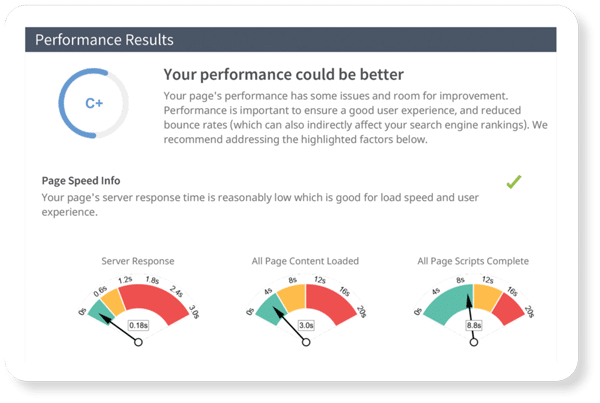Practices understand the importance of securing high Google rankings for important search queries your target audiences use to research your services and find you. Unfortunately, most practices have felt trapped and unable to directly impact their own rankings.
However, I want to share 5 tips that you and your team can start implementing to impact your Google rankings, particularly those that participate in their website’s content, branding, calls-to-action, etc.
What Matters To Google; How You Can Help Yourself
There are hundreds of constantly changing ranking factors Google uses to index search results. Yet, like most things, there are fundamental elements that make up the foundation, and those remain fairly consistent. It’s why ranking results change, but not drastically from one day to the next.
Moz (an industry-leading SEO resource) conducted its 2018 Local Organic Ranking Factors and identified the top three:
- Link Signals
- On-page Signals
- Behavioral Signals
The first two, generally rely more heavily on your SEO specialist and agency to improve. Implementing internal link strategies and attracting credible, relevant and authoritative incoming links can make up as much as half of your SEO specialist’s time. On-site optimization also is typically managed by an SEO specialist, who goes through the website on a page-by-page basis to update meta data, headings, content, schema structured data, etc.
Where you and your team can make an impact on your own SEO results is your users’ behavioral signals. Nobody knows your clients or prospective customers better than you and your team; their interests, motivations, concerns, questions, state of mind, and decision-making process. Put your insights to work and elevate your user engagement and behavior signals. Users matter!
The following are 5 Engagement Tips that can help you not only improve your Google rankings, but enhance your user experience and generate more leads.
1.) Increase Page Duration and Dwell Time
Although similar, there is a difference between page duration and dwell time. Page duration is the average amount of time visitors stay on a given page. Dwell time, on the other hand, starts when a user comes to your site by clicking on your Google listings and ends when they return to Google. Keep in mind, many of your most important Google searches you are targeting list relevant internal pages, not just your home page. By increasing the amount of time a visitor spends on a target page, you can increase the value of that page, its rankings, as well as the overall time spent on your website. Here are some general suggestions to help improve page duration:
- Develop long-form content – This type of content tends to be longer (1,500+ words), but also more comprehensive and authoritative about a given topic. Rather than have several smaller pages that visitors need to click and find, long form pages provide a one-stop resource that is informative and credible.
- Utilize strategic subheadings – To ensure high readability, long form pages need to be highly organized and broken out into digestible amounts. Use creative and identifiable subheadings to help visitors find what they need.
- Video content – Use video to help tell your story and communicate more insight, information and passion to your visitors. Not only will you increase comprehension of your content, you will increase the time on your page.
- Focus on aesthetics – Visitors will quickly judge the quality of a page and much of that starts with visuals. Make sure the aesthetics and imagery of the page helps project quality and “connects” with your visitors’ intent.
- Downloadable resources – To create a more authoritative page, consider offering downloadable resources like checklists, consumer guides, and how-to instructions. Not only will you increase your dwell time, you will enhance your conversions (and your SEO rankings).
2.) Reduce Bounce Rates
A bounce is a visitor that comes to your website and without spending much time or clicking to other pages, leave your website.Although bounce rates can vary largely based on the user intent and how they got to your site, high bounce rates can affect your behavior signals.
- Develop logical “next step” links – Leverage your knowledge of your target audience and strategize obvious next steps to help them through the decision-making process. Include next-step links throughout the content, and don’t end pages with a dead end.
- Create compelling graphic call-to-action links – Adding visuals to your calls-to-action make them stand out and increases clicks.
- Don’t hide navigation – Using a hamburger menu on a desktop design may enhance the look, but requiring visitors find your navigation menu reduces usability and clicks.
- Leverage obvious topics of interest – You know your audience better than anyone. Use your insights and creativity to create compelling links to pricing, photos, videos, samples, offers, etc.
3.) Generate Return Visitors
An important behavioral signal that sends Google the message that your website and pages have credible value is attracting return visitors. Google Analytics tracks new and returning visitors and a general guideline is the 80/20 rule: 80 percent new visitors and 20 percent return visitors. Hubspot earlier identified 15 percent as a healthy amount, but that was a while back. And with Google’s recent updates focused on Expert, Authority and Trust signals, returning visitors is likely a more important signal. Conducting remarketing campaigns are things your practice can do to improve SEO and generate more leads.
- Retargeting campaigns – Identifying website visitors and providing them relevant and compelling reasons to return to your website helps send the right signs to Google.
- Social media – Promoting your high quality new content, blogs, videos, FAQ answers, and consumer resources to your branded social media audience is a key strategy in developing a loyal community and repeat website visitors.
- E-Newsletters and email updates/specials – Emails to your database of contacts is still the more most direct means to reach and direct your most loyal audience to your new website content and updates.
- Loyalty programs – For those practices that have services and products to create residual revenue and repeat business, loyalty programs are a great opportunity to develop more lifetime customers. It is also a natural way to reach those loyal customers who want your notifications of new offers and rewards with reasons to come back to your website.
4.) Don’t Scare Visitors Off; Pull Them In!
To create higher engagement pages, it is important to not annoy or scare visitors away. High engagement pages for SEO are different than conversion landing pages for PPC.
- Large pop-up ads – Avoid using interstitial (pop-up) ads that take up the screen and pirate control of the screen from your visitors. Not only will you increase “back arrow” clicks, Google may even ding your page.
- Secure pages – Surprisingly, I still find many websites that continue to have unsecure HTTP websites. “Unsecure” notifications when visitors come to your website will not only scare visitors back out of your site, Google does not trust your page as well.
- Old, superficial, salesy pages – Read your primary pages. Many were written years ago with short, generic, sales-driven content with the over-optimized copy (keyword stuffed) text. Replace these pages with more useful, E-A-T content. Not only will Google reward you, consumers will be compelled to go deeper into your content and site.
- Pull visitors in by addressing the obvious (pricing) – The most obvious question that visitors have, yet the vast majority of websites avoid is pricing. By creating calls-to-action addressing the pricing question, you communicate that it is okay to request cost and you are confident in your pricing structure. We all know they are going to ask about it anyway, so why not “call the elephant in the room” and utilize the most obvious engagement topic?
5.) Increase Conversions
Google can recognize when conversion actions (newsletter requests, downloads, form submissions, chat engagements, click-to-call links, etc.) are taken and rewards websites that consumers trust enough to take the next step.
- Reduce form fields – Avoid intimidating forms that request too much information from non-bonded customers. Limit your fields to those that are most important.
- Minimize required fields – If you are getting a lot of visitors to exit your form pages without completing them, reduce or eliminate the required (*) fields. In many instances, they will put in fake information (like phone numbers) anyway.
- Utilize off-hour conversion – Many visitors come to your websites after your office is closed. Offer them the ability to engage with your office during these times with live chat and text messaging options. You will generate more leads and send trust signals to Google.
There are steps your practice can take to participate in securing higher search engine rankings. The first is applying your insights and knowledge about your clients and target audience interests, motivations, concerns, and behaviors to improve your website and build a more loyal, engaged audience.
If you would like some suggestions to start assessing your website and ideas to help improve your website’s usability and engagement, call MyAdvice at 435.575.7470.




